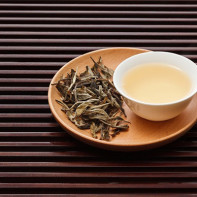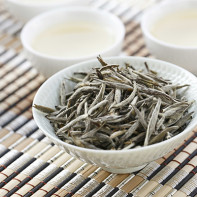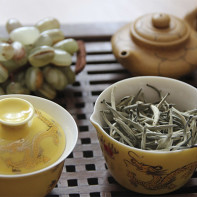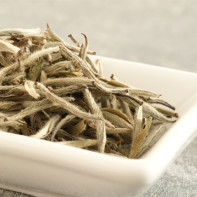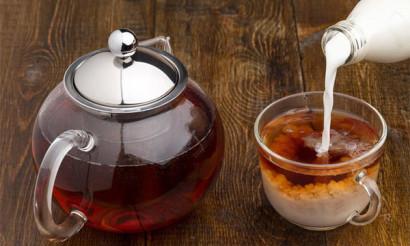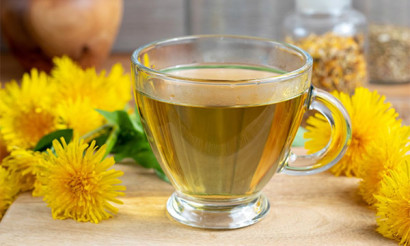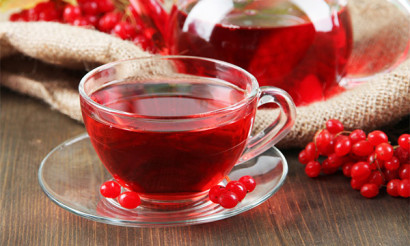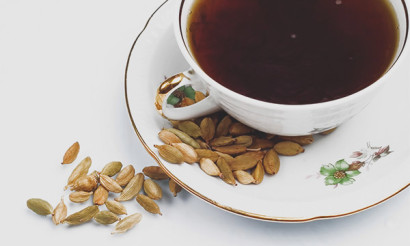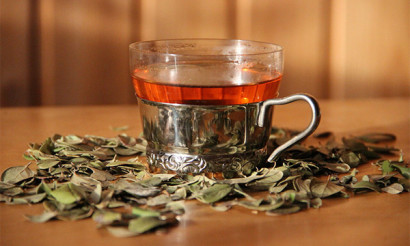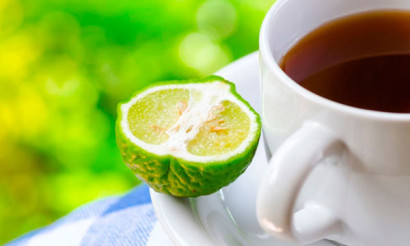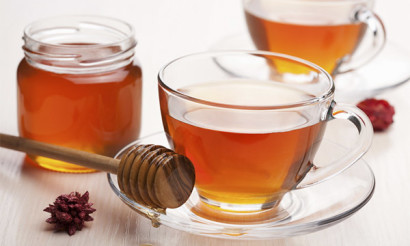White tea: benefits and harm to the body
The divine drink of aristocrats - this is the name that bears white tea. In ancient China, only the emperor and his family could afford to enjoy this view. The healing properties of this drink were discovered in the X-XI centuries: during the measles epidemic in the Middle Kingdom, it was white tea that was used to prevent the disease. The most delicate taste and floral aroma of white tea have the ability to create a festive atmosphere even on the most cloudy and cold day.
- What is white tea and how does it look
- Kinds
- What is the difference between white tea and green
- What is more useful
- Composition and calorie content
- Useful properties of white tea
- General benefit
- For women
- For men
- During pregnancy
- When breastfeeding
- For kids
- When losing weight
- Features of use for diseases
- Hypertension
- Diabetes
- Cholecystitis
- Gastritis
- Pancreatitis
- Cancer
- Obesity
- White tea in cosmetology
- Restoring mask for dry hair
- Mint rinse aid
- Brightening mask for blondes
- Nourishing mask
- Tonic "Snow White"
- Mask "Clean skin"
- Mask for age spots
- Harm and contraindications
- How to choose and store
- How to brew white tea
- Interesting facts about tea
What is white tea and how does it look
White tea is considered one of the oldest healing drinks in China. It belongs to non-fermented varieties, since a young, only slightly unfolded tea leaf with a kidney is used for preparation, passing a minimum number of treatments.
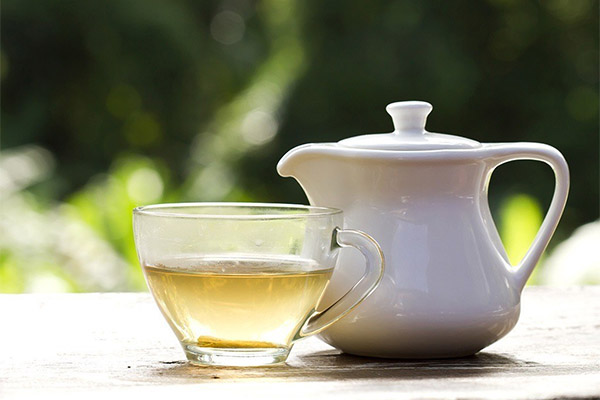
The finished drink has a slightly greenish or lemon tint. Herbal notes are felt in a rich floral aroma. The delicate taste of white tea has a slight astringency and natural sweetness.
For the manufacture of this variety, tea bushes are used, having peculiar elongated leaves and buds, covered with white lowered hairs. In the wild, they grow only in China. For production, not only varieties found in nature are used, but also new ones, bred specially by the breeders of the Middle Kingdom. One of the first to produce unique tea trees with larger leaves: varieties "White Narcissus", "Xiao Bai" and "Da Bai Cha Shu" (the largest tea bush). It is from the leaves of these varieties that one of the best drinks in the world is obtained.
At first, white tea was produced in Fujian, and after some time this was also done in the neighboring territories of Shuji and Zhenhe. These three provinces supply selected elite teas to the world market.
Later engaged in the cultivation of elite varieties of tea tree steel in India. On the plantations of Sri Lanka, special tea bushes have been growing for a long time, but only one species produces white tea.
Kinds
Celestial produces more than 12 varieties of White tea. The most popular are:
- White Peony. This species is produced only in the only place in the Middle Kingdom - Fujian province. Only barely blossomed young leaves with buds are selected for it. The collection takes place once a year - in the spring. "White Peony" refers to rare varieties, so it is quite expensive.
- White silver needles - An elite variety of white tea. It got its name “Silver Threads” thanks to its unusual delicate buds having a silvery shade of villi. For the collection of leaves allotted only a few days of the spring period. Processing of tea buds and leaves is done manually.
- White Pu-erh Tea - the most amazing and rare variety. Its taste is strikingly different from others - bitterness is completely absent. Tea bushes in small quantities grow only on highland Chinese plantations. Harvesting and processing leaves is a rather laborious process, therefore, white Puer tea is present in small quantities on the market and is sold at a very high price.
Affordable white teas of low quality include Gong Mei and Shou Mei.
Only 2 types of white tea are produced in India:
- White Darjeeling has a sweet, delicate taste and an unusual golden color. It is considered the best Indian type of white tea.
- Assam White. Tea bushes grow in one place on earth - the Assam region of India. It has the sweetest taste among all types of white tea and is considered the rarest variety. You can buy a real "White Assam" by prior order at the factory. Its cost is so high that units can make a purchase.
In Sri Lanka, the only type of white tea produced is Ceylon White. In its unusual aroma, a pine smell is felt, and there are honey notes in the taste.
Among connoisseurs and connoisseurs of tea, "Ceylon White" is considered a royal drink.
What is the difference between white tea and green
White and green tea are good drinks with excellent taste. The distinctive properties of these varieties include:
- Production process. After collection, the leaves for white tea do not roll out, do not burn, therefore they are less susceptible to oxidative processes. They dry in a specially created environment under the influence of sunlight, so the finished drink has a delicate taste. After harvesting, green tea leaves are dried using artificial heat.
- Raw materials. The composition of white tea includes buds and young leaves, while green tea consists of large fully opened leaves. Although in some varieties they add tea bush buds.
- Taste qualities. White tea has a sweeter natural taste and delicacy.
- Cost. Although among the green varieties of tea are quite expensive, the price of white is much higher.
White tea, unlike green tea, is a weakly fermented beverage.
What is more useful
Which of the varieties of tea - white or green - is more useful, it is impossible to say unequivocally. Both varieties have plant-based antioxidants. Based on the results of recent laboratory studies, white tea has advantages over green tea in preventing the formation of cancer cells.
The invigorating properties of green are not inherent in white tea. It contains a little caffeine (in some types it is not at all), so it has a more calming effect on the body than green.
Composition and calorie content
The raw materials used in the production of White tea do not undergo heat treatment. The whole vitamin and mineral complex, bestowed by nature, is present in the finished drink.
The chemical composition of this tea variety contains:
- vitamins of group B, A, C;
- essential oils and vegetable antioxidants;
- amino acids;
- tannin.
Macro- and microelements: potassium, calcium, magnesium, fluorine, iron, phosphorus and sodium. The calorie content of the product varies from 0 to 4 kcal per 100 g and depends on the amount of sweetener added.
Useful properties of white tea
General benefit
Ancient Chinese doctors considered this type of tea to be the best way to fight various infectious diseases, pathologies of internal organs, and mental pain. Recommended it as a means of inhibiting the aging process.
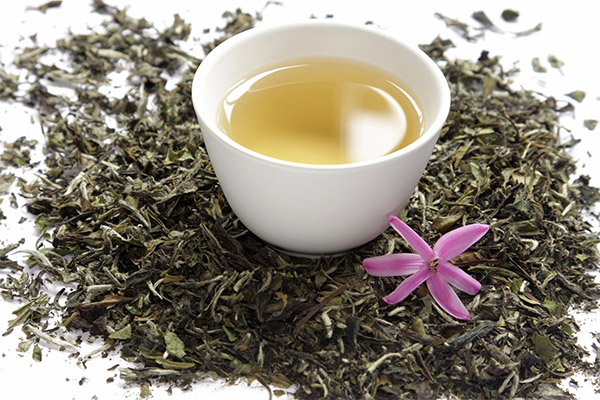
Beneficial effect on the body:
- Normalization of pressure, strengthening the walls of blood vessels - reducing the risk of diseases of the cardiovascular system.
- Lowering cholesterol, preventing the appearance of plaques and blood clots.
- Cleansing the body of harmful substances through the removal of toxins.
- Elimination of nervous disorders: depression, chronic fatigue, overexcitation.
- The strengthening effect on bone tissue due to fluorine and calcium, which are part of the tea leaf.
- Antibacterial properties to combat rotovirus infections, gum disease and tooth decay.
- Elimination of pain with rheumatism, gout, radiculitis, arthritis due to anti-inflammatory qualities.
- Protecting the body from the effects of bacteria, germs and viruses, stimulating the immune system.
- Improving metabolism.
White tea has an effective and beneficial effect on the body, regardless of age and gender.
For women
The pacifying properties of tea favorably affect the female body, reducing irritability and suppressing increased irritability during critical days and age-related hormonal changes. Normalizing the water balance in the body, white tea has a positive effect on the appearance of a woman: circles under the eyes disappear, the skin on the face is smoothed, and swollen legs at the end of the day are also a rare occurrence.
The presence of a vitamin complex in the composition of the drink improves vision, reducing eye fatigue after working at the computer. 1-2 cups of white tea per day can not only improve the general condition, but also charge them with vigor and energy.
For men
At home, white tea is considered a balm for men's health. It restores strength, increases potency and reduces the risk of prostate cancer. This kind of tea is especially useful for men whose work is associated with strong mental stress and a lot of stressful situations.
During pregnancy
The minimum caffeine content in white tea contributes to its safe use by pregnant women. A rich vitamin complex, including vital calcium and fluorine, antimicrobial properties have a beneficial effect on the general condition of the mother and the unborn baby. A cup of a weakly brewed drink can eliminate the inexplicable feeling of anxiety, increased irritability inherent in pregnant women. But white tea should not be abused, as it interferes with the absorption of folic acid.
When breastfeeding
The strengthening and calming qualities of white tea favorably affect the well-being of the mother, who is nursing the baby. Useful elements, although not in large quantities, are transmitted along with milk to the baby. They improve the bowel of the newborn, reducing pain during colic, and normalize sleep.
For kids
Despite the fact that Chinese children drink tea almost from the first days of life, European pediatricians recommend including it in a children's diet from 3-4 years. White tea has a positive effect on the development of the child’s immune system, providing a strengthening effect on the body. Equally important is the property of the drink to improve metabolism, which positively affects the work of the stomach and intestines. Although this variety is weakly fermented, it is useful for children to drink only tea of medium and weak strength.
When losing weight
White tea improves the metabolic process, contributing to the rapid absorption of food. This prevents the formation of body fat. Its diuretic properties do not allow excess fluid to linger in the body. Thanks to such qualities, the drink is included in the daily diet of obese people.
Features of use for diseases
A cup of fragrant white tea with a delicious taste will not only enhance your mood and warm you in cold weather, but will also help your body fight some diseases.
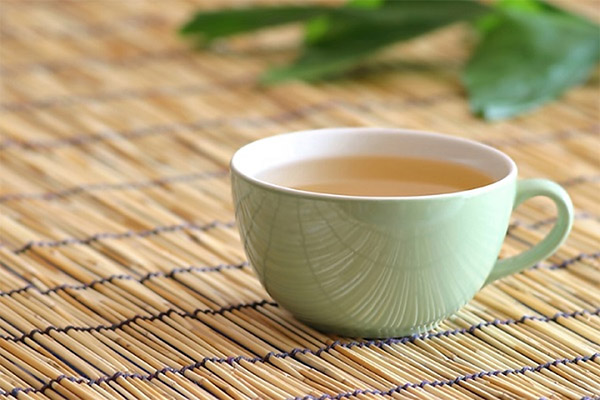
Hypertension
White tea acts as a diuretic, cleanses blood vessels, preventing the formation of thrombosis, and lowers cholesterol. People with high blood pressure are encouraged to include it in their daily diet. The daily dose is 700 ml of warm tea, without additives and sweeteners.
Diabetes
The vitamin-mineral complex contained in white tea normalizes sugar levels in pathology of the II degree, reduces the risk of developing the disease. The drink prevents the symptoms of diabetes: polydipsia (excessive thirst), increased insulin secretion, decreased glucose.
To improve your well-being in diabetes, you should drink tea 3-4 times a day 20-30 minutes after the main meal. The duration of admission is 6 months, then a short break should be taken.
Cholecystitis
White tea normalizes the process of discharge of bile. Antibacterial qualities prevent the formation of inflammatory processes in the bile ducts and liver. A cup of tea will relieve and relieve cramping. During the period of exacerbation, it is recommended to drink 600 ml of the drink per day.
Gastritis
The drink improves the digestive process, therefore, with diseases of the stomach, it is consumed immediately after eating. Drinking 2-3 cups of white tea daily is recommended. It is worth giving up use during an exacerbation of the disease. Caution should be taken with a drink if the disease is chronic.
Pancreatitis
White tea can have a beneficial effect on the pancreas and not harm the body only if certain rules of use are observed:
- Do not brew too strong a drink.
- It is better to refuse additives: honey, sugar, fructose, milk.
- Buy only pure white tea: without herbs, flavor enhancers.
During an exacerbation of the disease, it is recommended to drink 0.5 l of the drink to reduce pain.
Cancer
White tea has antimutagenic properties and is considered a chemoprophylactic and anti-cancer natural remedy. Antioxidants, flavonoids contained in the drink, prevent the spread of cancer cells, preventing the appearance of metastases. The strengthening effect of white tea helps the body cope with the disease and reduce pain.
Studies conducted by American scientists have proven the effectiveness of using white tea for cancer of the stomach, prostate and colon.
Obesity
Nutritionists include this drink in the diets of overweight people. White tea, drunk after eating, speeds up the process of digestibility of food and the breakdown of fats and carbohydrates, helping in weight management. In addition, it replenishes the body with vitamins and minerals.
This variety of tea is an excellent natural remedy that increases the body's resistance to colds during the autumn-spring period of influenza epidemics.
White tea in cosmetology
Due to the high content of substances useful for the skin and hair, white tea extract is used in the manufacture of cosmetic preparations. It is part of makeup, cream, soap, toothpaste, masks, scrubs, lotions.
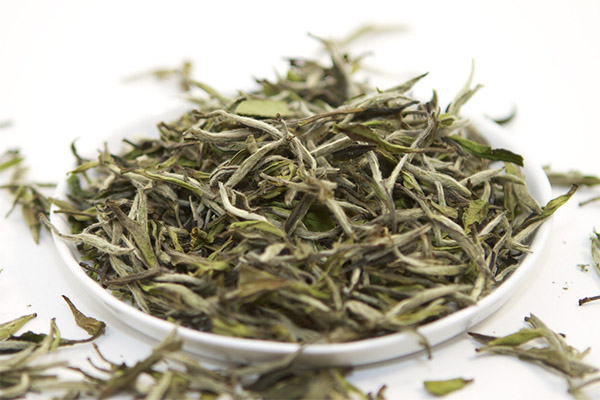
This component makes the skin smoother and firmer, copes with wrinkles and black spots, slows down the aging process and maintains a healthy complexion. Most often it is used in funds for problem skin. It helps to normalize the water balance, eliminating redness, irritation and removing unwanted shine.
An important property of white tea is the whitening effect. After using masks or lotions, the skin color noticeably improves. It acquires a lighter shade, age spots, freckles become almost invisible.
White tea extract protects the body from harmful ultraviolet rays, restores and supports cells, thereby helping the skin always look young and beautiful.
As part of hair masks and shampoos, this ingredient promotes the awakening and activation of hair follicles. Hair becomes stronger and silky, easy to comb, do not get confused, the ends are soldered. The scalp is moisturized, dandruff, irritation and peeling disappear. After applying products with white tea extract, the hair looks much better.
You can also prepare face and hair care products based on white tea at home.
Restoring mask for dry hair
This tool perfectly nourishes hair after a summer vacation on the sea coast.
- 50 ml strong tea leaves.
- 20 ml of flax oil.
- Raw yolk.
Mix all the ingredients using oil and tea leaves at room temperature. Apply to strands and scalp. Cover your head with a towel. Wash off the mask after 40 minutes.
Mint rinse aid
Composition:
- White tea - 60 ml.
- Peppermint - 30 g.
- Boiled hot water - 1 liter.
Put the ingredients in a bowl. Pour boiling water. To stir thoroughly. Leave the rinse for about half an hour.
Apply with shampoo after each wash. Apply rinse aid to wet clean hair, hold for 5-7 minutes. Rinse thoroughly after time. After application, the hair will become silky and soft, will be easy to comb and become a little more voluminous.
Brightening mask for blondes
The tool is great for thin hair. It strengthens them, accelerates them, gives volume and colors a little. After application, the hair becomes thick and strong.
- 40 g of cottage cheese.
- 50 ml of white tea.
- 25 g sour cream.
Knead the cottage cheese until smooth, getting rid of large lumps. Transfer it to a deep bowl. Gradually add sour cream to it, not forgetting to mix. Pour the mixture with previously prepared weak warm tea. Insist for half an hour.
After washing your hair, apply the mask to slightly damp hair. Spread the entire length from the roots to the tips. Wrap your hair in a warm terry towel. Hold for 10-15 minutes. After rinse thoroughly with warm water. Repeat the procedure once or twice a week for one month.
Nourishing mask
The composition of this tool contains only 2 components: white clay (4 tablespoons) and white tea (80 ml). In the tea leaves, gradually add clay and mix. The result is a mask resembling a creamy mixture. The resulting mask to lubricate the hair. Leave no more than 15 minutes.
Tonic "Snow White"
This easy-to-prepare product will not only improve the complexion, but with constant use it will noticeably reduce facial wrinkles.
- 100 ml of hard-brewed white tea.
- 2 tbsp cucumber juice.
- 15 ml freshly squeezed lemon juice.
Cool the tea leaves, pour in the cucumber and lemon juice. Wipe the skin after morning and evening washing. Keep tonic in the refrigerator or cool place.
Mask "Clean skin"
It helps in the fight against acne in adolescence.
- 5 tbsp brewed white tea.
- 2 tbsp apple cider vinegar.
- White clay.
Mix the tea leaves with vinegar. Pour some clay and stir. The mask should be a thin consistency. Apply the mixture on the face and leave to harden (about 10-15 minutes). Rinse with running water.
Mask for age spots
Composition:
- Tea leaves - 120 ml.
- Small oatmeal - 50 g.
- 1/2 part banana.
Pour the flakes with warm tea leaves and leave to infuse for 7 minutes. Place the resulting mixture in a blender and add a banana. Grind to a puree state. Apply the mask for 10 minutes.
Harm and contraindications
White tea is not able to have a negative effect on the human body. No harmful components are present in its composition. This type of tea does not cause allergies, but requires caution in drinking caffeine intolerance to people (although it contains quite a bit).
A small amount of tea should be taken during an exacerbation of chronic diseases of internal organs.
White tea is contraindicated in case of kidney disease: its diuretic properties can cause undesirable consequences in the work of this organ.
Unpleasant sensations from drinking tea (vomiting, discomfort in the stomach, intestinal upset, headache) appear only with excessive abuse.
How to choose and store
Real White tea has a rather high price: the cost per 100 g is from 3200 rubles.To reduce the price of the product, some manufacturers add green tea leaves, herbs, fruits, flavor enhancers to the composition. You can buy really good white tea in China or on the websites of Chinese manufacturers.
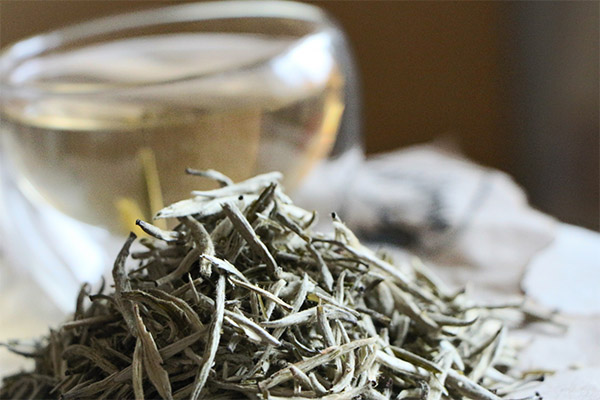
Regardless of the variety, tea cannot completely deteriorate. Over time, it loses its taste, since the raw material for the tea leaves dries up or is saturated with moisture.
In order for white tea to remain tasty for as long as possible and not lose its beneficial properties, it is necessary:
- Do not purchase large quantities at once.
- Pour the purchased tea into a ceramic container with an airtight lid.
- Store in a kitchen cabinet away from the stove.
- Do not put spices, condiments, herbs and coffee beans next to white tea: tea leaves absorb the surrounding aromas.
Under proper storage conditions, quality tea will not deteriorate within 12-18 months.
How to brew white tea
At home, this drink has a special relationship. The Chinese do not just make and drink tea. This process involves a number of traditions and rituals.
You will be able to enjoy the wonderful taste of white tea if you follow the basic rules for making tea leaves:
- Use only purified water or water from sources.
- Pour the tea leaves with boiling water, not more than 55–75 ° C.
- Observe the proportions: 3-5 ml of tea 150 ml of water.
- Insist brewing for at least 3 minutes, during which time the essential oils and beneficial properties will saturate the water.
The taste will be fully revealed if you do not add sweeteners, milk or cream to the drink.
Tea leaves made from quality white tea are used 2-3 times.
Interesting facts about tea
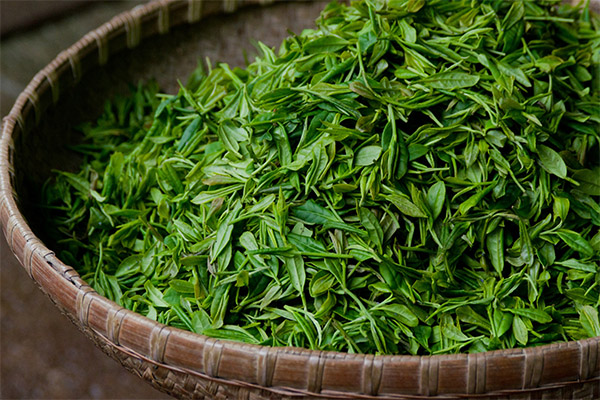
- Tea pickers are forbidden to eat onions, garlic, tobacco before work. These limitations are associated with increased sensitivity of tea leaves to extraneous aromas: they absorb them quite quickly.
- White tea was first tasted in China over 800 years ago.
- White tea varieties are among the most expensive in the world. One of the factors affecting the price is a short collection period - only 2-3 days a year and only at dawn hours.
- China is considered the main supplier of tea to the world market. It accounts for 1/4 of all production volumes.
- Every year, on December 15, connoisseurs of this amazing and healthy drink celebrate the “Tea Day” holiday.
- The most expensive tea in the world is DaHongPao, in translation - a large red bathrobe. 100 g of this drink costs $ 1,025.
- The inhabitants of the Earth daily drink 3 billion cups of tea of various capacities.
- Ice tea was first served in 1904 at the World Exhibition in St. Louis. During the event were the hottest days in history.
- In the fourteenth and fifteenth centuries, tea tournaments were held in Japan. Participants were asked to identify the type of tea and name the country and the exact place of growth.
«Important: all information on the site is provided exclusively in fact-finding purposes. Before applying any recommendations, consult with a profile specialist. Neither the editors nor the authors are liable for any possible harm caused materials. "

